Fixing into masonry walls
Masonry walls are most commonly concrete block (lightweight or dense), brick, natural stone and rubble, and many combinations of these categories. They all require the same fixings and technique. Use a cable, pipe and stud detector to help find safe positions to fix into. It is important to locate all these elements, all of which may be concealed within the wall surface you are working on. For masonry walls you either need a drill/driver that has a hammer action (this type of drill/driver often referred to as a combi drill) or a corded power drill. Unless you are using specialist masonry screws, you need to use a wall plug for each fixing.
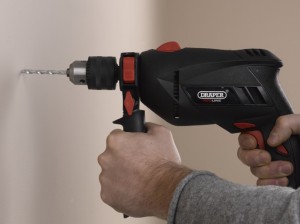 |
1. Drill a hole in the wall to the depth required, using the correct size of masonry bit. A 6-7mm bit is a popular size for most fixing requirements. The wall plug will have the size written on its side. |
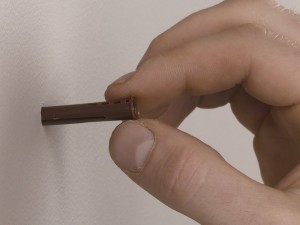 |
2. Insert the wall plug. You should be able to push it in, but it may need a light tap with a hammer. |
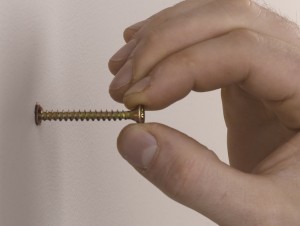 |
3. With the plug flush to the wall, insert the screw, giving it one or two twists by hand to hold it in position. |
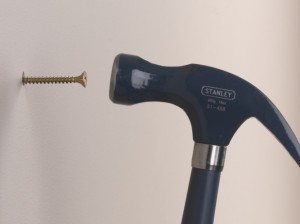 |
4. Gently tap with a hammer until you feel resistance. You are not trying to fully insert the screw at this stage. |
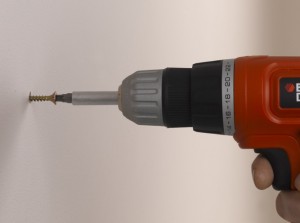 |
5. Screw in place using a drill/driver. Choose the correct size and shape of bit to fit the screwhead. |
Drilling tips
- Types of drill bit fall into three main classifications – wood, masonry and high speed steel (hss).
- Most masonry bits are recognisable by the distinctive widening at the tip of the bit .

- The drill bits for SDS drills require a different type of bit than that for standard drills. The bits are similar at their points, but different in the way they fit into the drill chuck. The chuck on a standard drill is simply tightened onto the shaft of the bit, but the chuck of an SDS drill acts more like a socket  in that the bit is pushed in place.
- A combi drill is a good all-purpose tool that is fine for occasional use drilling into masonry walls, but if you’re going to do a lot of drilling into masonry walls, you need a power drill.
- For further advice on cordless drills, see my guide – ‘Buying a cordless drill’.
